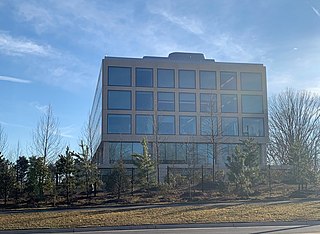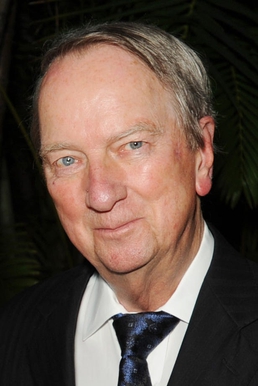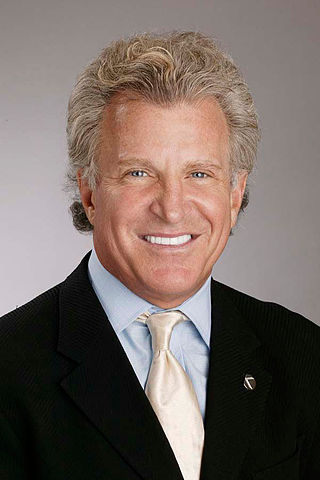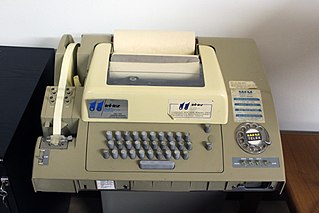
Coleco Industries, Inc. was an American company founded in 1932 by Maurice Greenberg as The Connecticut Leather Company. It was a successful toy company in the 1980s, mass-producing versions of Cabbage Patch Kids dolls and its video game consoles, the Coleco Telstar dedicated consoles and ColecoVision. While the company ceased operations in 1988 as a result of bankruptcy, the Coleco brand was revived in 2005, and remains active to this day.

Telefonaktiebolaget LM Ericsson, commonly known as Ericsson, is a Swedish multinational networking and telecommunications company headquartered in Stockholm. The company sells infrastructure, software, and services in information and communications technology for telecommunications service providers and enterprises, including, among others, 3G, 4G, and 5G equipment, and Internet Protocol (IP) and optical transport systems. The company employs around 100,000 people and operates in more than 180 countries. Ericsson has over 57,000 granted patents.

General Dynamics Corporation (GD) is an American publicly traded aerospace and defense corporation headquartered in Reston, Virginia. As of 2020, it was the fifth-largest defense contractor in the world by arms sales, and fifth largest in the United States by total sales. The company is a Fortune 100 company, and was ranked No. 94 in 2022.
The video game crash of 1983 was a large-scale recession in the video game industry that occurred from 1983 to 1985, primarily in the United States. The crash was attributed to several factors, including market saturation in the number of video game consoles and available games, many of which were of poor quality. Waning interest in console games in favor of personal computers also played a role. Home video game revenue peaked at around $3.2 billion in 1983, then fell to around $100 million by 1985. The crash abruptly ended what is retrospectively considered the second generation of console video gaming in North America. To a lesser extent, the arcade video game market also weakened as the golden age of arcade video games came to an end.

ITT Inc., formerly ITT Corporation, is an American worldwide manufacturing company based in Stamford, Connecticut. The company produces specialty components for the aerospace, transportation, energy and industrial markets. ITT's three businesses include Industrial Process, Motion Technologies, and Connect and Control Technologies.

CompuServe was an American online service, the first major commercial one in the world. It opened in 1969 as a timesharing and remote access service marketed to corporations. After a successful 1979 venture selling otherwise under-utilized after-hours time to Radio Shack customers, the system was opened to the public, roughly the same time as The Source. H&R Block bought the company in 1980 and began to more aggressively advertise the service.
The Western Electric Company was an American electrical engineering and manufacturing company officially founded in 1869. A subsidiary of the American Telephone and Telegraph Company for most of its lifespan, it served as the primary equipment manufacturer, supplier, and purchasing agent for the Bell System from 1881 until 1984, when the system was dismantled. The company was responsible for many technological innovations, as well as developments in industrial management.
A voicemail system is a computer-based system that allows people to leave a recorded message when the recipient is unable to answer the phone. The caller is prompted to leave a message and the recipient can retrieve said message at a later time.

NEC Corporation is a Japanese multinational information technology and electronics corporation, headquartered at the NEC Supertower in Minato, Tokyo, Japan. It provides IT and network solutions, including cloud computing, artificial intelligence (AI), Internet of Things (IoT) platform, and telecommunications equipment and software to business enterprises, communications services providers and to government agencies, and has also been the biggest PC vendor in Japan since the 1980s when it launched the PC-8000 series.

The Renault Alliance is a front-wheel drive, front-engine subcompact automobile manufactured and marketed in North America by American Motors Corporation (AMC) for model years 1983–1987. The Alliance and its subsequent hatchback variant, the Encore, were re-engineered Renault 9 & 11 for the U.S. and Canadian markets.

Harold "Hal" Sydney Geneen, was an American businessman most famous for serving as president of the ITT Corporation.

The breakup of the Bell System was mandated on January 8, 1982, by a consent decree providing that AT&T Corporation would, as had been initially proposed by AT&T, relinquish control of the Bell Operating Companies, which had provided local telephone service in the United States. This effectively took the monopoly that was the Bell System and split it into entirely separate companies that would continue to provide telephone service. AT&T would continue to be a provider of long-distance service, while the now-independent Regional Bell Operating Companies (RBOCs), nicknamed the "Baby Bells", would provide local service, and would no longer be directly supplied with equipment from AT&T subsidiary Western Electric.

Standard Telephones and Cables Ltd was a British manufacturer of telephone, telegraph, radio, telecommunications, and related equipment. During its history, STC invented and developed several groundbreaking new technologies including pulse-code modulation (PCM) and optical fibres.
AT&T Technologies, Inc., was created by AT&T in 1983 in preparation for the breakup of the Bell System, which became effective as of January 1, 1984. It assumed the corporate charter of Western Electric Co., Inc.

The Hartford Financial Services Group, Inc., usually known as The Hartford, is a United States-based investment and insurance company. The Hartford is a Fortune 500 company headquartered in its namesake city of Hartford, Connecticut. It was ranked 160th in Fortune 500 in the year of 2020. The company's earnings are divided between property-and-casualty operations, group benefits and mutual funds.

This history of the telephone chronicles the development of the electrical telephone, and includes a brief overview of its predecessors. The first telephone patent was granted to Alexander Graham Bell in 1869.

Rand Vincent Araskog was an American manufacturing executive, investor, and writer who served as the CEO of ITT Corporation. During his time as the CEO between 1979 and 1998 he was known for divesting the conglomerate of multiple businesses including hotels, rental cars, and insurance to retain its focus on its core telecom businesses.

Raphael, formerly Richard, Rakowski is an American entrepreneur, investor and health care and energy consultant. He has had a 30-year career in sales engineering, process control consulting, and entrepreneurial start ups in health care services and renewable energy. He is a public speaker and advocate for changes to the American health care system. He is the subject of a documentary film examining the effects of the Holocaust on his childhood.

Telex is a telecommunication service that provides text-based message exchange over the circuits of the public switched telephone network or by private lines. The technology operates on switched station-to-station basis with teleprinter devices at the receiving and sending locations. Telex was a major method of sending written messages electronically between businesses in the post–World War II period. Its usage went into decline as the fax machine grew in popularity in the 1980s.
TRW Vidar was an American telecommunications company, owned by TRW Inc., that made digital telephone switches from the mid-1970s to the early 1980s. They were the first, or one of the first, companies to make such a switch. Before being acquired by TRW Inc., they were known as Vidar Corporation and later, after a buyout, they were known as American Digital Switching.














